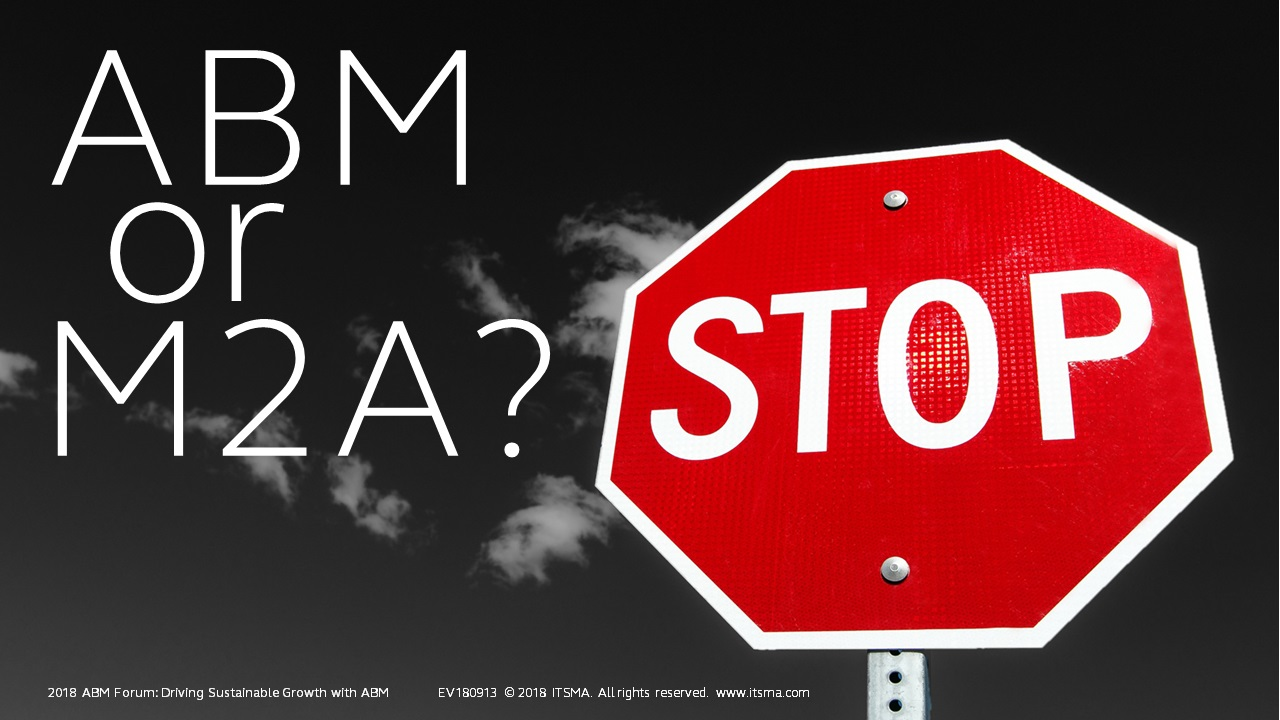In the first part of a two-part report, Joe Stanganelli distinguishes One-to-Many ABM from mass marketing and segment marketing. Second part tomorrow.
Two shades of gray separated by a fine gray line. That’s the metaphor which perhaps best describes exactly what the difference is between targeted mass marketing and One-to-Many ABM (a.k.a. programmatic ABM) – a difference that even well-versed ABM thought leaders can find to be a stumbling block.
After all, the majority of the most effective tactics for programmatic/One-to-Many ABM, as identified in the 2017 book by Bev Burgess and Dave Munn, A Practitioner’s Guide to Account-Based Marketing, also come straight from any standard Digital Marketing 101 playbook: reverse IP tracking, re-targeting, email marketing, blogging, and social-media engagement. Burgess and Munn also identify direct mail as another of the most effective tactics in One-to-Many ABM — but that’s another tool that is hardly the sole province of the highly personalized and customized ABM strategies.
So what the heck is the difference between One-to-Many ABM and segment marketing or mass marketing?
“That’s probably the biggest gray area in Account-Based Marketing today, [and] the hardest area,” Rob Leavitt told me in a recent phone interview. As SVP of the Information Technology Services Marketing Association (ITSMA), Leavitt definitely knows his ABM stuff – and even he had to take a moment to think about and best unwind this nebulousness. “It’s a gray area — and it’s probably a gray line that separates the two — but…I always go back to our core [ABM] principles.”
Canceling the “programmatic”
For starters, ABM pundits have come to disfavor the term “programmatic” to describe an approach that is still, at its heart, personal – wherever a prospect or customer happens to be.
“‘Programmatic’ is associated so commonly with [traditional] advertising,” said Leavitt. “We always stress multi-channel online and offline approaches, even with hundreds of accounts, so ‘One-to-Many’ seems more appropriate.”
ITSMA leaders have certainly been consistently outspoken on the needs for true ABM-ers to maintain customer-centric focuses along with close collaboration and integration between sales teams. Consequently, for Leavitt, the two key elements of a One-to-Many ABM strategy are:
- “A constant commitment to research and insight” into subject accounts and their attendant issues, and
- “A constant collaboration with sales to reach out” to subject accounts and customize, as much as possible, increasingly personalized and segmented “approaches, messaging, content, activities,” etc. to said accounts on an ongoing basis.
One-to-Many: It’s Personal
These bullet-points, per Leavitt, are what distinguish a programmatic ABM campaign spread across hundreds of accounts from plain old marketing to accounts (M2A that merely promotes particularized offers to account sets based on typical targeting tactics).
“It’s more than saying, ‘Oh, here are 100 financial-services companies [and] we’ve got a great financial-services solution; let’s promote the heck out of it for those 100 accounts and see what we get.’ That’s targeted marketing,” explained Leavitt. “[One-to-Many ABM] is continuing to build profiles of each of those 100 accounts, and continuing to work with sales to sub-segment and personalize as you’re beginning to nurture [the] accounts and create different approaches.”
ABM at scale means doing more
To wit, for the One-to-Many ABM-er, once they’ve done their traditional targeting (which remains a necessary beginning step to One-to-Many ABM, Leavitt concedes), they still have more homework to do – and they have to do it better, more thoroughly, and at a higher level than their non-ABM counterparts. They must study, analyze, and learn how different segments, sub-segments, and individual companies or accounts each react differently to different messaging and approaches – and how each buy and integrate solutions differently. From there, per Leavitt, One-to-Many ABM practitioners can take what started out as a broad spray-and-pray and actually personalize it — even at scale.
“That’s a lot more than, ‘Dear Rob, here’s my generic whitepaper,'” observed Leavitt, putting himself in the position of a prospect as he explained. “It’s understanding my role, my business, my industry, [and] my priorities — and tailoring activities[,] messaging, and connection based on that client insight.”
To be sure, at ITSMA’s 2018 ABM Forum earlier this month, Burgess talked up additional tailored tactics that companies presently favor for their One-to-Many ABM balancing acts – including roadshows, and similar hyper-focused events, account-based content syndication, targeted social ads, and similar tools allowing for at least light personalization.
As for the remaining “most effective tactic” for One-to-Many ABM that Burgess and Munn identified last year? “One-to-one, face-to-face meetings”.
It’s definitely not mass marketing.








